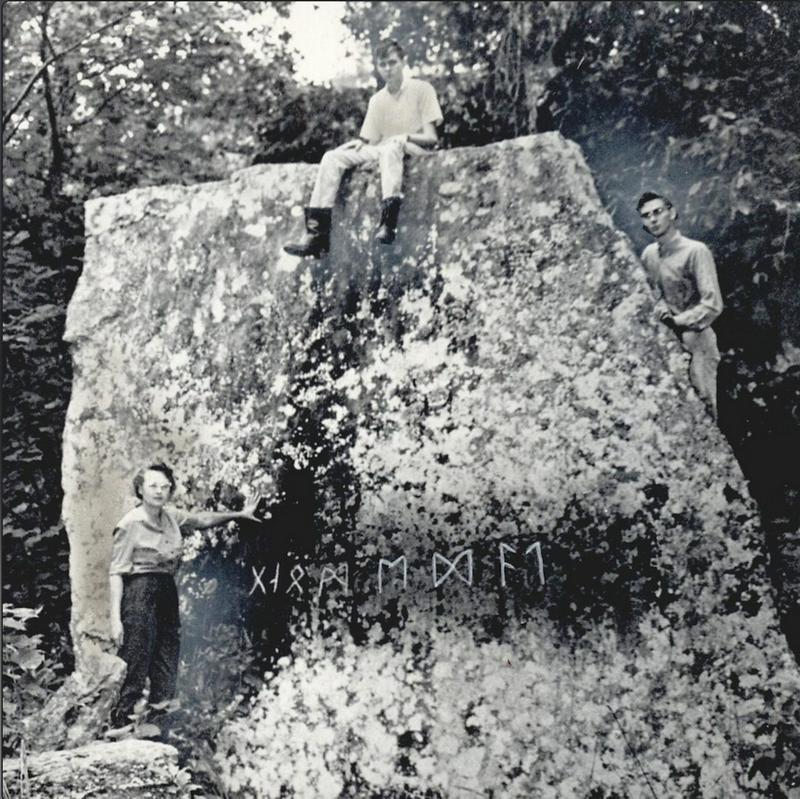Did Vikings Travel To Ancient Oklahoma? The Story Behind The Heavener Runestone
By Sarah Norman | January 29, 2024
The Heavener Runestone
The Heavener Runestone, also known as the Oklahoma Runestone, is a massive stone carving measuring approximately 10 feet by 12 feet, located in Heavener Runestone Park in Oklahoma. This enigmatic artifact, adorned with eight symbols resembling Scandinavian runes, has intrigued scholars and visitors alike for decades. Some believe it is evidence of Viking presence in America over a thousand years ago, while others dismiss it as an elaborate hoax of more recent origin. So what is the Heavener Runestone? And how did it get here? Let's dig into it.

The Heavener Runestone's history dates back to the late 1830s when a Choctaw hunting party stumbled upon the runes. Initially, locals referred to it as "Indian Rock," assuming that Native Americans were responsible for the inscriptions. However, the story took a turn in 1928 when Gloria Farley, a local resident, became captivated by the mysterious carvings. Her relentless research efforts led her to the Smithsonian, which identified the inscriptions as being in a Scandinavian language. The runes spelled out "GNOMEDAL," a term believed to mean "sundial valley" or "monument valley."
The Viking Connection

Farley's curiosity expanded as she contemplated the possibility of Scandinavian explorers, namely Vikings, being the authors of these runes. This notion was not far-fetched, as historical accounts already detailed the travels of Norse explorer Leif Erikson to "Vinland," believed to be modern-day Newfoundland, nearly 500 years before Christopher Columbus. Farley questioned, "If the Vikings had sailed to Russia, Ireland, England, France, and the Mediterranean, why not Oklahoma via the Mississippi River?"
Farley hypothesized that Vikings could have navigated from Newfoundland to Florida and eventually entered the Gulf of Mexico, coming ashore near Heavener, Oklahoma. Her theory gained traction when two more runestones were discovered nearby, cementing her status as the leading advocate of the Viking origin theory.
Expert Opinions and Doubts

However, not all experts share Farley's conviction. Some archaeologists and linguists argue against the authenticity of the inscriptions. Lyle Tompsen, a specialist in the Viking period, pointed out that the linguistic evidence is ambiguous, and the inscriptions do not match Old Norse grammar and structure. Henrik Williams, a professor in Nordic languages, noted the absence of definitive word endings in the runes, a characteristic inconsistent with Old Norse. Furthermore, the inscriptions on the Heavener Runestone appear to be a combination of Elder Futhark and Younger Futhark, pre-dating Viking exploration.
The Heavener Runestone also defies typical Viking runestone conventions, as it lacks a definitive layout or ornamentation. Moreover, the absence of Viking inscriptions in historically established Viking settlements like Iceland and Greenland casts doubt on the possibility of Vikings reaching Oklahoma.
Modern Creation or Historical Artifact?

In light of these expert opinions, the authenticity of the Heavener Runestone as a Viking artifact remains contentious. Lyle Tompsen suggests that it is more likely a modern creation, probably dating back to the 19th century, during a period of Scandinavian immigration and the Viking Revival. He speculates that a Scandinavian immigrant, possibly a Swedish immigrant working at a local train depot, may have left these carvings as a form of graffiti.
Alternative theories suggest connections to the La Salle expedition of 1687 or a Swedish captain leading German colonists to the area in the early 18th century.
The Heavener Runestone Today

Despite the ongoing debate, the Heavener Runestone continues to attract thousands of visitors each year. Enthusiasts of Viking history and the outdoors alike flock to the site to ponder the origins of the inscriptions. An annual festival dedicated to celebrating the possibility of Viking presence in Oklahoma has been active for a decade, drawing vendors, re-enactors, and curious visitors from around the world.

